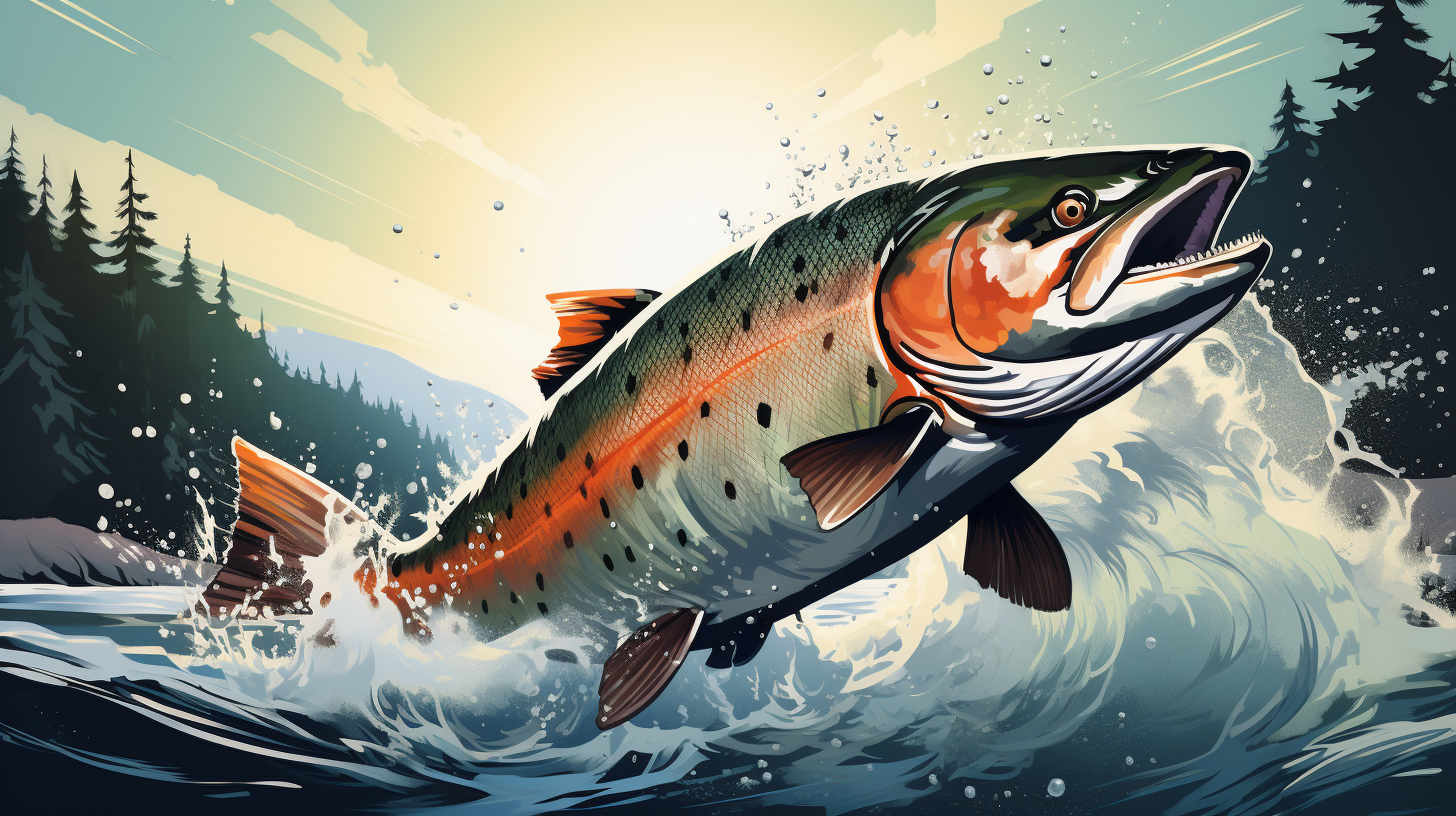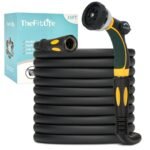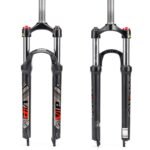Salmon is a popular and nutritious fish that can be found all over the world. Known for its distinctive pink flesh and rich flavor, salmon is a favorite among seafood lovers and is a versatile ingredient that can be used in a variety of dishes.
In this article, we will explore the habitat, diet, fishing techniques, tackle and gear, regulations, tips and tricks, conservation efforts, safety, record catches, popular destinations, history and culture, and future outlook of salmon fishing.
Key Takeaways:
- Salmon is a popular and nutritious fish that can be found all over the world.
- Understanding the habitat and behavior of salmon is essential for successful fishing and conservation efforts.
- In this article, we will explore the habitat, diet, fishing techniques, tackle and gear, regulations, tips and tricks, conservation efforts, safety, record catches, popular destinations, history and culture, and future outlook of salmon fishing.
Habitat: Where to Find This Type of Fish
Salmon is a type of fish that is found in both the Pacific and Atlantic Oceans. They are born in freshwater streams and rivers, then migrate out to the open sea, and eventually return to freshwater to spawn.
Pacific salmon species can be found in the coastal waters of Alaska, British Columbia, Washington, Oregon, California, and Russia. Atlantic salmon, on the other hand, are found in the North Atlantic Ocean and its tributaries, including rivers in Europe and North America.
Read More OutdoorGoodness Articles
Salmon can also be found in various bodies of water around the world, including the Great Lakes of North America, Patagonia in South America, and the South Island of New Zealand. Many species of salmon have been introduced and naturalized into non-native environments.
Salmon prefer cold, clean water with a high oxygen content. They are typically found in streams and rivers with gravel beds, where they can lay their eggs. Adult salmon are known to return to the same spawning grounds where they were born, sometimes traveling hundreds or even thousands of miles to do so.
Overall, salmon can be found in a wide variety of habitats, from small streams to large rivers and even the open ocean. Their ability to adapt to different environments and migrate long distances makes them a fascinating and important species of fish.
Diet: The Secret to Catching This Fish Type
When it comes to catching salmon, understanding their diet is key. Salmon are known for their migratory patterns and are often found in different locations depending on the time of year. Knowing what they eat can help you determine where to find them.
Salmon are carnivorous and feed on smaller fish, crustaceans, and squid. They are also known to eat insects, plankton, and other small organisms. Depending on the species, they may have a preference for certain types of prey.
For example, Chinook salmon are known to feed on herring, sand lance, and smelt, while Coho salmon prefer to eat smaller fish like anchovies and sardines. Steelhead trout, a type of salmon, feed on insects and small crustaceans.
When fishing for salmon, it’s important to use bait that mimics their natural prey. This can include lures that resemble small fish or crustaceans, or flies that imitate insects. Live bait such as herring or anchovies can also be effective.
It’s also important to consider the time of year and location when selecting bait. For example, if you’re fishing for Chinook salmon in the Pacific Northwest during the summer, using a herring or anchovy lure may be more effective than using a fly.
By understanding the diet of salmon and using bait that mimics their natural prey, you can increase your chances of catching these elusive fish.
Fishing Techniques: Mastering the Art of Catching This Fish Type
Salmon fishing is a popular recreational activity for many anglers around the world. It’s not only a fun activity but also a great way to catch a delicious meal. Here are some fishing techniques that can help you master the art of catching salmon.
Mooching
Mooching is a popular technique used to catch salmon across their entire saltwater range. It involves using a light tackle with a rod in hand, allowing you to feel the fish bite and fight. This technique is particularly effective when fishing for salmon in shallow water.
Plunking
Plunking is a fishing method that involves casting your gear into a migratory path and then anchoring it on another spot. This gear is left alone in the water as you wait for fish to strike. Plunking is a great technique to use when fishing for salmon from shore or an anchored boat.
Trolling
Trolling is a technique that involves dragging a lure or bait behind a moving boat. This technique is effective when fishing for salmon in both freshwater and saltwater. The most effective lures for trolling are plugs, which mimic the movement of a wounded fish.
Drift Fishing
Drift fishing is a technique that involves casting your line upstream and allowing your bait to drift down over an area where you think the salmon are likely to be. As your line drifts, you slowly reel it in and then repeat the process until you get a strike. The best bait for salmon is salmon eggs.
Fly Fishing
Fly fishing is a popular technique used to catch salmon in freshwater streams and rivers. This technique involves using a lightweight rod and a specially designed fly that mimics the movement of insects or other small prey that salmon feed on.
In conclusion, mastering the art of catching salmon requires patience, practice, and the right techniques. Whether you prefer mooching, plunking, trolling, drift fishing, or fly fishing, there are many ways to catch this delicious fish.
Tackle and Gear: Essential Equipment for This Fish Type
When it comes to salmon fishing, having the right gear is essential. Whether you are a beginner or a seasoned angler, having the right tackle can make all the difference in your success on the water. Here are some of the essential pieces of equipment you’ll need to get started:
Rods and Reels
When it comes to salmon fishing, you’ll want a rod that is strong enough to handle the size and power of these fish. Look for a medium-weight rod between seven and nine feet long. A good spinning reel with a smooth drag system is also a must-have for salmon fishing.
Line and Leader
The type of line and leader you use will depend on the fishing conditions and the size of the fish you are targeting. Monofilament line is a good choice for beginners, as it is easy to handle and less expensive than other types of line. Fluorocarbon leader is also a good choice, as it is virtually invisible underwater.
Terminal Tackle
Terminal tackle refers to the hooks, baits, and lures that you use to catch fish. For salmon fishing, you’ll want to use a large, strong hook with a sharp point. Popular baits for salmon include herring, anchovy, and shrimp. Lures such as spinners and spoons can also be effective.
Other Gear
In addition to the basics, there are a few other pieces of gear that can make your salmon fishing experience more enjoyable. Waders are a must-have if you plan to fish in cold water or in areas with a lot of vegetation. Polarized sunglasses can help you see fish in the water and reduce glare. And a good fishing net can make it easier to land your catch without injuring the fish.
Overall, having the right tackle and gear is essential for successful salmon fishing. By investing in quality equipment and taking the time to learn how to use it effectively, you can increase your chances of landing the big one on your next fishing trip.
Regulations: Stay Legal and Fish Responsibly
When it comes to salmon fishing, it’s essential to know and follow the regulations to ensure that you’re fishing legally and responsibly. Here are some key regulations to keep in mind:
- Fishing Licenses: Before you head out to fish for salmon, make sure you have the appropriate fishing license. Licenses are typically issued by state or provincial governments and are required for both freshwater and saltwater fishing. Some areas may also require additional permits or tags for salmon fishing.
- Catch Limits: Many regions have catch limits in place to help protect salmon populations. These limits may vary depending on the species of salmon, the time of year, and the location. Make sure you know the catch limits in your area and follow them carefully.
- Size Restrictions: In addition to catch limits, some areas may also have size restrictions in place. These restrictions typically specify a minimum or maximum size for the salmon that you can keep. Again, make sure you know the size restrictions in your area and follow them carefully.
- Fishing Methods: Different fishing methods may be allowed or prohibited in different areas. For example, some areas may allow only catch-and-release fishing, while others may allow only certain types of lures or bait. Make sure you’re familiar with the fishing methods allowed in your area.
- Protected Areas: Some areas may be designated as protected or closed to fishing to help conserve salmon populations. Make sure you know which areas are protected and avoid fishing in these areas.
By following these regulations and fishing responsibly, you can help protect salmon populations for future generations to enjoy. Remember, fishing is a privilege, and it’s up to all of us to do our part to preserve our natural resources.
Tips and Tricks: Expert Tips for Catching More of This Fish Type
If you are looking to catch more salmon, then you have come to the right place. Here are some expert tips to help you improve your catch rate:
- Choose the right time and place: Timing is everything when it comes to salmon fishing. Salmon are more active during certain times of the day and in certain water conditions. Check local fishing reports or ask local fishing veterans about when and where you should fish for salmon.
- Use the right gear: The right gear can make all the difference when it comes to catching salmon. Make sure you have the right rod, reel, line, and bait for the type of salmon you are targeting. Consider using a 360 flasher to attract more fish.
- Sharpen your hooks: Salmon have a tough jawline, so it’s important to have sharp hooks. Dull hooks can make it difficult to catch a salmon even when it bites. Make sure to sharpen your hooks before you go out.
- Pay attention to your surroundings: Look for signs of salmon in the water, such as jumping fish or ripples on the surface. Pay attention to the weather and water conditions, as these can affect where the salmon are located.
- Use the right bait: Salmon can be picky eaters, so it’s important to use the right bait. Consider using live bait, such as worms or shrimp, or lures that mimic the salmon’s natural prey.
- Be patient: Salmon fishing requires patience. Don’t give up if you don’t catch anything right away. Keep trying different techniques and locations until you find what works best for you.
By following these expert tips, you can increase your chances of catching more salmon on your next fishing trip. Happy fishing!
Conservation: Protecting This Fish Type
Salmon are an important species for both the environment and humans. Protecting them is crucial to maintaining healthy ecosystems and economies. Here are some ways that we can conserve salmon populations:
- Protecting habitats: Salmon need clean and healthy habitats to survive. This includes both freshwater and marine environments. Efforts to protect and restore habitats can include removing dams, reducing pollution, and managing land use.
- Reducing overfishing: Overfishing can lead to a decline in salmon populations. Regulations on fishing practices and limits on the number of fish caught can help to reduce overfishing.
- Controlling invasive species: Invasive species can harm salmon populations by competing for resources or preying on them. Efforts to control invasive species can include removing them from habitats and preventing their introduction in the first place.
- Addressing climate change: Climate change can have a significant impact on salmon populations, such as altering water temperatures and changing ocean currents. Efforts to address climate change can include reducing greenhouse gas emissions and adapting to its effects.
Conservation efforts for salmon require cooperation between governments, organizations, and individuals. By working together, we can protect this important species and the ecosystems that they depend on.
Safety: Stay Safe While Reeling in the Big One
Fishing for salmon can be a fun and exciting activity, but it’s important to stay safe while doing so. Here are some tips to keep in mind:
- Wear a life jacket: Even if you’re a strong swimmer, wearing a life jacket can save your life in the event of an accident. Make sure the life jacket fits properly and is approved by the U.S. Coast Guard.
- Use caution when handling the fish: Salmon can be slippery and have sharp teeth. Use a pair of pliers or a fish gripper to handle the fish, and avoid touching the gills or eyes.
- Be aware of your surroundings: Look out for other boats, swimmers, and obstacles in the water. Keep a safe distance from other boats and follow all boating rules and regulations.
- Use proper fishing gear: Use a fishing rod and reel that are appropriate for the size of fish you’re targeting. Check your gear regularly for damage or wear and tear.
- Practice catch and release: If you’re not planning on keeping the fish, release it back into the water as quickly as possible. Use barbless hooks to make it easier to remove the hook from the fish’s mouth.
- Follow food safety guidelines: If you plan on keeping the fish to eat, make sure to clean and cook it properly. The FDA recommends cooking salmon to an internal temperature of at least 145 degrees Fahrenheit.
By following these safety tips, you can enjoy a fun and safe fishing experience while reeling in the big one.
Record Catches: Breaking Records: The Biggest Fish of This Type Ever Caught
Salmon fishing is a popular activity for many anglers around the world. It’s no surprise that some of the biggest fish ever caught have been salmon. Here are a few of the biggest salmon ever caught:
- In August 2021, teenager Luis Martinez caught his first-ever salmon, a 47.86-pound Chinook salmon, which went down as the biggest king ever caught in the Great Lakes. This catch broke the previous record of 46.06 pounds, which was set in 1978.
- According to IGFA records, the largest fish ever caught was a great white shark that weighed an unbelievable 2,664 pounds. However, the largest salmon ever caught was a 126-pound monster that was caught in a fish trap near Petersburg, Alaska, in 1949.
- Gayle Gordon caught a likely IGFA all-tackle world record king salmon, then released it in front of dozens of other fishermen. The salmon weighed 105 pounds and was caught in British Columbia in 2021.
These record-breaking catches show that there are still some massive fish out there waiting to be caught. However, it’s important to remember that not every fishing trip will result in a record-breaking catch. It takes patience, skill, and a bit of luck to catch a fish of this size.
If you’re looking to catch a big salmon, it’s important to do your research and find the best locations and techniques for the type of salmon you’re targeting. Whether you’re fishing in a river or out at sea, make sure you have the right gear and equipment to handle a big fish.
Overall, breaking records and catching the biggest fish of a certain type is an exciting achievement for any angler. With a bit of luck and skill, you too could catch a record-breaking salmon.
Popular Destinations: Where to Go for the Ultimate Fishing Experience for This Fish Type
Salmon is one of the most popular fish species for recreational fishing, and there are many destinations around the world that offer incredible fishing experiences. Here are some of the most popular salmon fishing destinations:
Alaska
Alaska is widely regarded as the salmon fishing capital of the world, and for good reason. The state is home to five species of salmon – King, Silver, Sockeye, Pink, and Chum – and offers some of the most spectacular fishing opportunities on the planet. The Kenai River is a particularly popular destination for salmon fishing, with anglers from around the world coming to catch trophy-sized King Salmon.
British Columbia
British Columbia is another top destination for salmon fishing, with the province’s many rivers and lakes offering excellent opportunities to catch Chinook, Coho, and Sockeye Salmon. The Fraser River is a particularly popular destination, with its massive runs of Chinook and Sockeye Salmon attracting anglers from around the world.
Scotland
Scotland is home to some of the best salmon fishing in Europe, with the country’s many rivers and lochs offering excellent opportunities to catch Atlantic Salmon. The River Tweed is one of the most famous salmon fishing destinations in Scotland, with its spring runs of large, hard-fighting salmon attracting anglers from around the world.
New Zealand
New Zealand is known for its incredible trout fishing, but it’s also a great destination for salmon fishing. The country’s rivers and streams are home to Chinook and Coho Salmon, which can be caught using a variety of techniques. The rivers around the town of Nelson are particularly popular among salmon anglers.
Pacific Northwest
The Pacific Northwest region of the United States is another popular destination for salmon fishing, with the Columbia River and its tributaries offering excellent opportunities to catch Chinook, Coho, and Sockeye Salmon. The region is also home to some of the best steelhead fishing in the world, making it a great destination for anglers looking for a variety of fishing experiences.
Whether you’re an experienced angler or a beginner, these destinations offer some of the best salmon fishing experiences in the world. From the rugged wilderness of Alaska to the rolling hills of Scotland, there’s a destination out there that’s perfect for you.
History and Culture: The Legacy of Fishing This Fish Type
Salmon has played a significant role in the culture and history of people around the world for thousands of years. Native American tribes in the Pacific Northwest have relied on salmon as a staple food source for generations. The fish’s annual migration up the Columbia River was once a spectacle of nature, with some Chinook salmon weighing more than 70 pounds.
Salmon fishing has been an important part of the economy and culture of the Pacific Northwest for centuries. Commercial salmon fishing began in the late 1800s, and by the early 1900s, canneries were established along the Columbia River. Today, salmon fishing remains a vital industry in the region, with many fishermen using traditional methods to catch wild salmon.
Salmon fishing has also played a significant role in the recreational activities of people around the world. Sport fishing for salmon has become a popular pastime in many areas, with anglers using a variety of techniques to catch these prized fish. Some of the most popular methods include fly fishing, trolling, and drift fishing.
In addition to its economic and recreational significance, salmon has also played a role in the cultural traditions of many Native American tribes. Salmon is often used in important tribal ceremonies, and the cultural knowledge of fishing and caring for salmon is central to many tribes’ way of life. Many tribes also continue to eat salmon as a part of their traditional diet.
Overall, the legacy of salmon fishing is one of cultural significance, economic importance, and recreational enjoyment. As we continue to appreciate the value of this remarkable fish, it is important to remember the role it has played in the history and culture of people around the world.
Future Outlook: The Future of Fishing This Fish Type
Salmon is one of the most popular fish types in the world. It is a highly nutritious fish that is packed with omega-3 fatty acids, vitamins, and minerals. However, salmon populations have been declining in recent years due to overfishing, habitat destruction, and climate change. As a result, the future of salmon fishing is uncertain.
To ensure the sustainability of salmon fishing, there are several measures that can be taken. These include:
- Implementing fishing quotas and regulations to prevent overfishing
- Protecting salmon habitats and restoring degraded habitats
- Developing sustainable aquaculture practices to supplement wild salmon populations
- Investing in research and technology to better understand and mitigate the effects of climate change on salmon populations
One promising development in the future of salmon fishing is the rise of land-based salmon farming. This method of aquaculture involves raising salmon in tanks on land, rather than in open ocean pens. Land-based salmon farming has several advantages, including:
- Reduced risk of disease and parasites
- More efficient use of resources, such as water and feed
- Reduced environmental impact, such as pollution and escapees
Several companies are already investing in land-based salmon farming, and it is expected to become more widespread in the coming years.
Overall, the future of salmon fishing is uncertain, but there are steps that can be taken to ensure its sustainability. By implementing fishing quotas and regulations, protecting salmon habitats, developing sustainable aquaculture practices, and investing in research and technology, we can help ensure that future generations can continue to enjoy this delicious and nutritious fish.
Key Takeaways for This Fish Type
Salmon is a delicious and versatile fish that is packed with nutrients. Here are some key takeaways to keep in mind when cooking and eating salmon:
- There are seven main types of salmon: Chinook, Coho, Sockeye, Pink, Chum, Steelhead, and Atlantic. Each type has its own unique flavor and texture, so it’s worth trying them all to find your favorite.
- Salmon is an excellent source of omega-3 fatty acids, which are essential for heart health and brain function. It is also rich in protein, vitamin D, and B vitamins.
- When buying salmon, look for wild-caught rather than farmed salmon if possible. Wild salmon is generally considered to be healthier and more sustainable than farmed salmon.
- There are many different ways to cook salmon, including baking, grilling, broiling, and pan-searing. Experiment with different methods to find the one that works best for you.
- Salmon pairs well with a wide variety of flavors and ingredients, including lemon, garlic, herbs, and spices. Don’t be afraid to get creative with your seasonings and sauces.
- Salmon is a versatile fish that can be used in a variety of dishes, from salads and sandwiches to pasta and stir-fries. Try incorporating salmon into your meals in new and exciting ways.
Overall, salmon is a delicious and nutritious fish that is easy to cook and versatile enough to be used in a wide variety of dishes. Whether you’re a seasoned chef or a beginner in the kitchen, there are many ways to enjoy this tasty fish.
Conclusion
Salmon is a highly nutritious fish that offers numerous health benefits. It is a rich source of protein, omega-3 fatty acids, vitamins, and minerals. Consuming salmon regularly can help improve heart health, reduce inflammation, improve brain function, and aid in weight loss.
However, it is important to be aware of the potential risks associated with consuming salmon. High levels of mercury and other pollutants can be found in some types of salmon, which can be harmful to human health. It is important to choose salmon that is sustainably sourced and low in contaminants.
Overall, salmon can be a healthy and delicious addition to your diet. It is important to choose high-quality salmon and prepare it in a healthy way, such as grilling or baking, to maximize its health benefits.
Frequently Asked Questions
What are some alternative ways to cook salmon?
Salmon can be cooked in various ways, including grilling, baking, broiling, poaching, and pan-searing. Each method has its unique flavor and texture. Grilling salmon gives it a smoky flavor, while baking it in the oven gives it a tender and juicy texture.
What are some common seasonings used on salmon?
Salmon can be seasoned with a variety of herbs and spices, including dill, garlic, lemon, parsley, and thyme. Other common seasonings include black pepper, salt, and paprika. The seasoning you use will depend on your taste preference and the cooking method you choose.
What are the nutritional benefits of eating salmon?
Salmon is an excellent source of protein, omega-3 fatty acids, and vitamin D. Omega-3 fatty acids help reduce inflammation and lower the risk of heart disease. Vitamin D is essential for strong bones and a healthy immune system.
What is the difference between wild-caught and farm-raised salmon?
Wild-caught salmon is caught in the wild, while farm-raised salmon is raised in fish farms. Wild-caught salmon is considered to have a more robust flavor and a firmer texture than farm-raised salmon. Farm-raised salmon is often less expensive and more readily available than wild-caught salmon.
How can I tell if salmon has gone bad?
You can tell if salmon has gone bad by checking for signs of spoilage, including a sour or fishy smell, slimy texture, or discoloration. If you’re unsure whether the salmon has gone bad, it’s best to discard it to avoid food poisoning.
What are some popular side dishes to serve with salmon?
Salmon pairs well with a variety of side dishes, including roasted vegetables, rice pilaf, quinoa, and salad. Asparagus, broccoli, and green beans are all great vegetable options to serve with salmon. A side of lemon wedges can add a zesty flavor to the dish.

Meet Kevin Goodell, your outdoor adventure coach! With a passion for nature ignited in childhood, Kevin brings a wealth of experience and expertise to simplify tough outdoor skills. As a U.S. Army veteran and former Sergeant, he has honed his leadership and teamwork abilities while developing a deep love for the great outdoors.
Kevin’s dedication to outdoor activities spans biking, birdwatching, national park trips, and archery/golf. With his friendly and approachable demeanor, he is committed to guiding individuals of all ages and skill levels towards unforgettable outdoor experiences.
Harnessing his extensive knowledge and personal achievements, Kevin is your go-to resource for learning and enjoying various outdoor pursuits. Whether you seek thrilling adventures or serene nature escapes, Kevin’s professional yet friendly approach will ensure an engaging and informative experience. Embark on your next outdoor adventure with Kevin Goodell and embrace the beauty of nature like never before.






